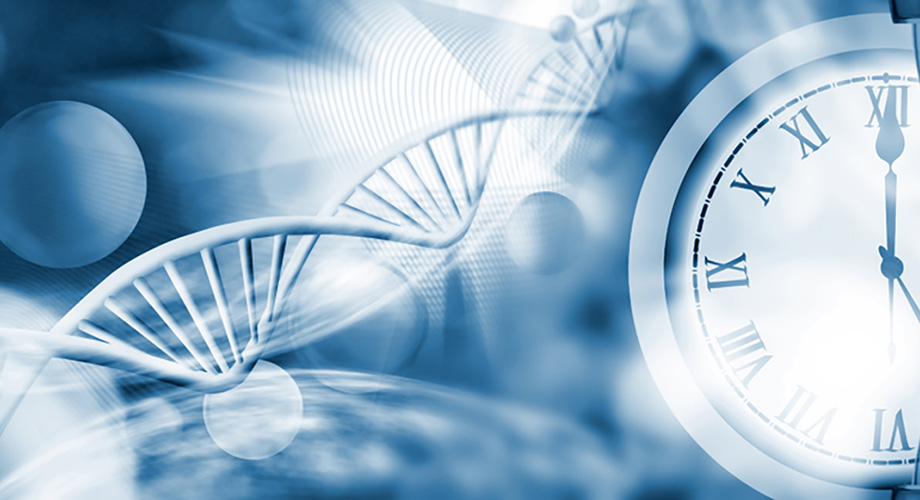
Scientists reveal how internal biological clock may suppress tumor growth
New discovery helps explain how disruption to daily biological rhythms could lead to increased risk of cancer.
July 01, 2021
LA JOLLA, CA—Those who engage in long-term, rotational shift work, such as nursing or firefighting, are at increased risk of developing cancer, but the biological roots of this phenomenon have remained largely unknown.
Now, new research from the lab of Katja Lamia, PhD, an associate professor of Molecular Medicine at Scripps Research, demonstrates a clear link between the circadian clock and the body’s tumor suppression system, with the potential to accelerate cancer cell growth.
Published in the Proceedings of the National Academy of Sciences of the United States of America, the new research shows how mutant forms of the circadian clock gene CRY2 found in human tumors are able to dampen the activity of a key tumor suppressor gene, P53.
The discovery highlights the importance of our daily cycles for cancer prevention and could potentially guide the development of circadian-based therapeutics.
“This is the first study to investigate point mutations in a core clock gene that have been reported in human cancers,” says Lamia. “The impact of these genetic changes on P53 activity is truly remarkable and indicates a striking regulation of tumor suppression by the circadian clock.”
Overlapping cycles
Circadian rhythms describe the physiological and behavioral changes that occur over the 24-hour cycle as an organism anticipates alterations in its environment and activities. One of the major proteins that governs molecular timekeeping is CRY2, which originally evolved from bacterial DNA-repair machinery.
Lamia’s team previously observed that without CRY2, mouse cells accumulated more DNA damage and were more vulnerable to tumor growth. After identifying this relationship between the circadian and cell cycle, the team went on to explore the molecular pathways involved, particularly in the context of human cancers.
Perusing the genomic catalogue
As part of their new study, the scientists looked to The Cancer Genome Atlas, a landmark database that characterizes the genetic signatures of thousands of tumor samples, spanning over 30 different types of cancer.
“This atlas is constantly updated with genetic sequencing from human tissue samples, so it makes you feel like you’re seeing the data in real time,” says Alanna Chan, PhD, first author of the study. “It enabled us to look across all cancers and pinpoint mutations in core components of the circadian clock.”
From the database, the team identified five mutated versions of CRY2 that have been observed by independent researchers in various tumor types. When the CRY2 mutants were then incorporated into an experimental mouse cell line, two of them in particular had striking effects on tumor proliferation.
Releasing the brakes
To better understand the molecular mechanisms involved, Lamia’s team homed in on the protein encoded by the P53 gene, which has been nicknamed the “guardian of the genome” because of its vital role in DNA repair and the suppression of uncontrollable cell growth. P53 is normally triggered in response to DNA damage from toxic chemicals, ultraviolet rays or the activation of cancer-promoting genes, known as oncogenes.
By activating one of these oncogenes (c-MYC) and promoting excessive cell growth in the lab, Lamia and the team could test how the mutated forms of CRY2 were influencing the safeguards to tumor development. They found that the two CRY2 mutants of interest could block P53 activity, releasing the brakes on cell division and accelerating the formation of tumors. In this way, the researchers describe how an aberrant circadian clock and loss of normal rhythms could tip the balance towards runaway cell growth.
“More and more research is showing how disruptive daily behaviors can alter the normal cycles of our circadian clock genes,” says Chan. “It’s important to know now that the knock-on effects can directly influence how resilient our cells are in clearing away potential cancers.”
The study, “CRY2 missense mutations suppress P53 and enhance cell growth,” was supported by the National Institutes of Health and the Brown Foundation for Cancer Research.
Additional authors include Lara H. Ibrahim and Michael J. Bollong; and Gian Carlo G. Parico, Jennifer L. Fribourgh and Carrie L. Partch from University of California Santa Cruz.
For more information, contact press@scripps.edu

